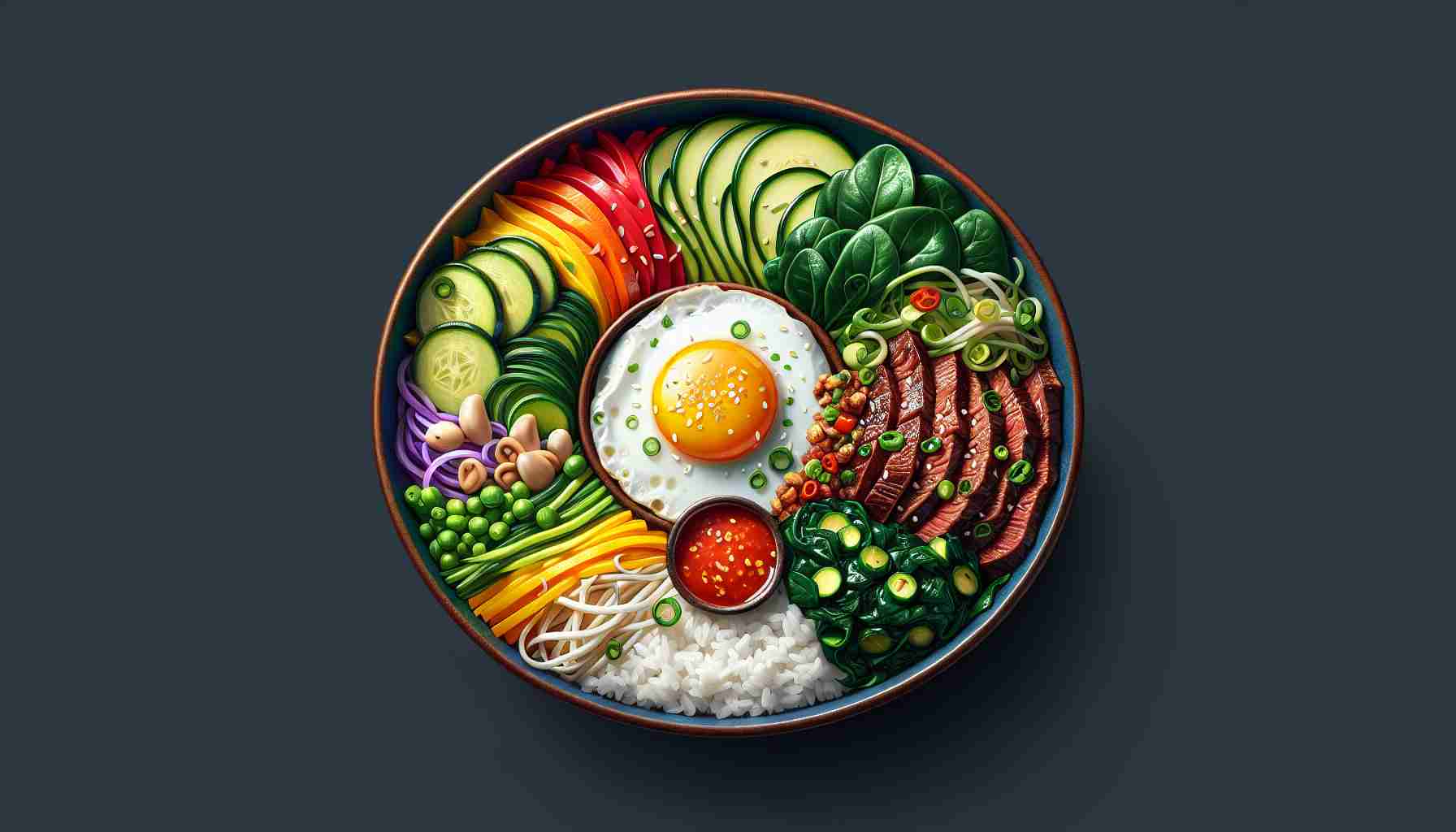Classic Korean Bibimbap: A Vibrant and Nutritious Rice Bowl
Bibimbap, a beloved Korean dish, is a delightful mix of warm rice topped with a variety of seasoned vegetables, gochujang (Korean chili paste), soy sauce, and, often, a fried egg and sliced meat (usually beef). The term “bibimbap” literally means “mixed rice” and is a wonderful way to enjoy a balanced, colorful, and flavorful meal in a single bowl.
Ingredients
For the rice:
– 2 cups short-grain white rice
For the toppings:
– 1 cup spinach
– 1 carrot, julienned
– 1 zucchini, julienned
– 1 cup bean sprouts
– 200g shiitake mushrooms, sliced
– 250g beef sirloin, thinly sliced
– 1 garlic clove, minced
– 1 egg per serving
– Sesame oil
– Soy sauce
– Salt
– Pepper
– Sesame seeds
– Gochujang (Korean chili paste)
Instructions
Step 1: Cook the Rice
1. Rinse the rice under cold water until the water runs clear.
2. Cook the rice in a rice cooker or on the stove according to package instructions.
Step 2: Prepare the Vegetables
1. Blanch the spinach in boiling water for about 30 seconds, then transfer to a bowl of ice water to stop the cooking process. Drain and squeeze out excess water. Season with a pinch of salt and a few drops of sesame oil.
2. Sauté the carrot in a little sesame oil over medium heat until softened. Season with salt.
3. Repeat the process with the zucchini, seasoning with salt and a dash of sesame oil.
4. Blanch the bean sprouts in boiling water for about 1 minute, then drain and season with salt and a bit of sesame oil.
5. Sauté the shiitake mushrooms with a bit of sesame oil, minced garlic, and soy sauce until cooked through.
Step 3: Cook the Beef
1. Marinate the beef slices in a mix of soy sauce, minced garlic, a bit of sesame oil, and a pinch of pepper for at least 15 minutes.
2. Sauté the beef in a pan over medium-high heat until cooked through.
Step 4: Fry the Eggs
1. In a separate pan, fry the eggs sunny-side up to your desired level of doneness.
Step 5: Assemble the Bibimbap
1. Place a serving of cooked rice in each bowl.
2. Arrange the prepared vegetables and beef in sections on top of the rice.
3. Add a fried egg on top of each bowl.
4. Sprinkle with sesame seeds and serve with a generous spoonful of gochujang on the side (let each person mix in their own amount according to their taste).
Description
Bibimbap is not just a meal but an experience, bringing together various ingredients that offer different tastes and textures. This dish is highly customizable; you can mix and match vegetables or add tofu for a vegetarian option. The vibrant presentation and the interactive nature of stirring everything together right before eating make Bibimbap a favorite among Korean cuisine enthusiasts. Enjoy the harmonious flavors of this iconic dish!








